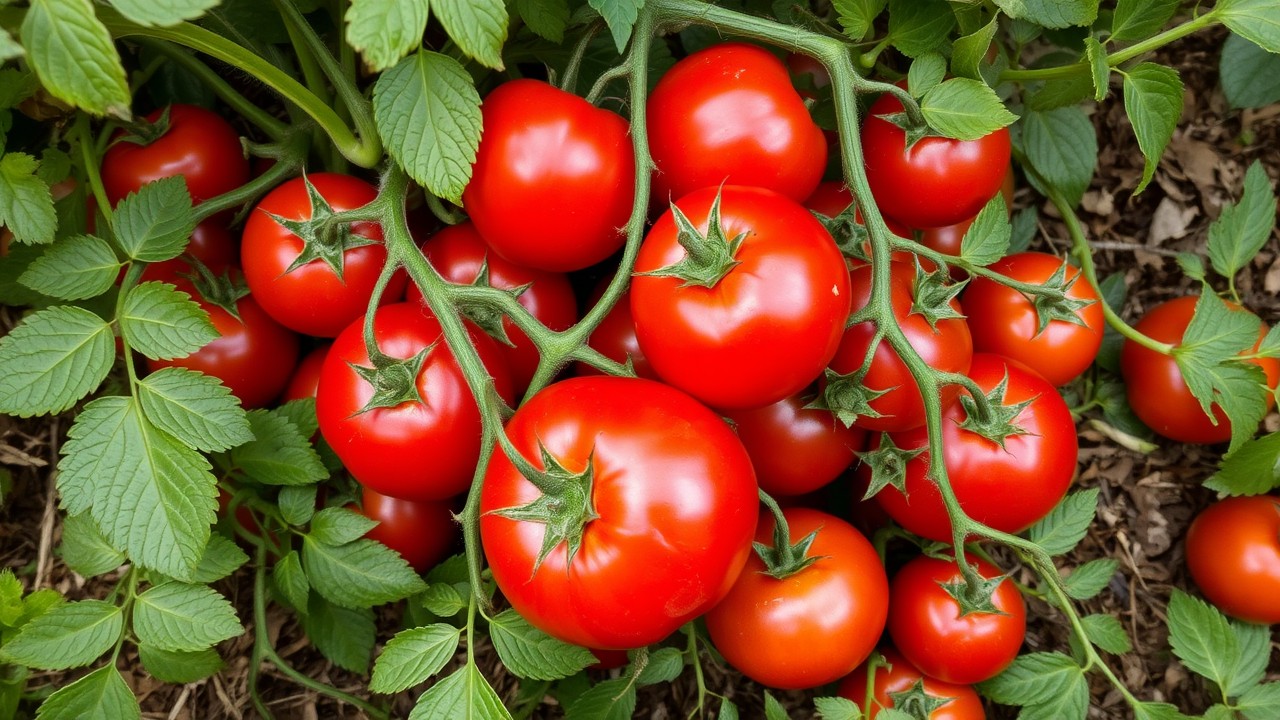Texas is among many USDA hardiness zones, starting from zone 6 in the Panhandle to zone 9 along the Gulf Coast. These diverse Texas growing zones present varying challenges and opportunities for the cultivation of greenhouse tomato plants. Fortunately, our guide adopts a month-by-month approach and furnishes you with what you need to know and do to grow healthy greenhouse tomato plants this winter, thereby saving you money while offering a continuous fresh tomato supply.
Planning and Preparation of Texas Winter Gardening
Choosing the Right Winter Tomato Varieties
The first order of business is to select the right winter varieties. While many tomatoes do very well in Texas heat, growing tomatoes in winter requires those that can handle cooler temperatures associated with shorter days. Excellent cold-weather tomatoes for Texas greenhouse growing include Stupice, which boasts an early yield and cold tolerance; Siberian, another early variety with flavor; and Sub-Arctic Plenty, a very prolific variety that can handle chilly conditions. When choosing your winter tomato varieties, research each for disease resistance and expected production in a greenhouse environment.

Greenhouse Setup
Texas weather is unstable due to temperature drops, intense sunlight, rain, and wind. Provide appropriate foundation and drainage systems to manage Texas's extreme rainfall events. The structure needs to be engineered to support significant wind loads throughout the state. Multiple points of entry enable better ventilation management, supplemented by shade cloth systems that moderate light intensity. An anti-condensation coating is applied to interior surfaces to prevent moisture-related problems and to safeguard winter tomato varieties.
Maintaining optimal greenhouse temperature control is crucial for growing tomatoes in winter. Ideally, your greenhouse should be kept between 65-75°F during the day and no lower than 55°F at night for thriving winter greenhouse tomatoes. Get a good, thermostat-controlled heater to take the edge off those cold snaps. Fans and ventilators are just as crucial in keeping the hot periods from overheating, with automated systems that will open and shut based on the temperature readings.

On the other hand, too much humidity invites fungal diseases, while low humidity tends to retard plant growth. The ideal levels of humidity should ideally be maintained in the range of 60-70%. A hygrometer will, of course, be able to provide information on the level of humidity and thus you may adjust levels accordingly by using humidifiers or dehumidifiers when the need arises. The tomatoes' proper ventilation also contributes somewhat to greenhouse humidity control.
Texas Frost Dates
Understanding frost dates is essential for planning your Texas winter gardening schedule. Texas growing zones range from zone 6 to zone 9, with frost dates varying significantly throughout the state. One way to determine when to begin planting seeds indoors and when to transfer the seedlings to the greenhouse is by calculating the approximate dates of the final spring frost and the initial fall frost. Giving ample thought to these factors in planning and preparation will set the tone for a successful and fruitful winter tomato harvest in your Texas greenhouse.
Month-by-Month Growing Guide
This guide will take you through the process of growing winter greenhouse tomatoes in Texas, month by month, for a very good harvest.
| Month | To-do | Be Careful |
| October | Sowing | Heating and ventilation |
| November-December | Seedling Care and Transplanting | Temperature control |
| January-February | Growth and Maintenance | Humidity management |
| March-April | Flowering and Fruit Set | Pollination |
| May-June | Harvesting and Succession Planting | Clean and prevent disease |
October (Sowing)
Begin seeding indoors using a quality seed starting mix. You will want to use a mix that is designated for seedlings because they carry all the necessary nutrients and drainage. Sow seeds into small pots or seed trays; give ample light and heat. A heat mat can be purchased which can help to establish the correct heat for optimum germination to occur. While your seedlings are taking their head start, get your greenhouse ready for Texas winter gardening. Give the greenhouse a good cleaning to rid it of any debris or plant residue that may be harboring some unwanted pests or diseases. Check the heating and ventilation to be working.
November-December (Seedling Care and Transplanting)
As your seedlings grow and develop their first true leaves, gradually acclimate them to cooler temperatures to harden them off in preparation for the greenhouse. When a few inches tall and past the danger of frost for your Texas growing zones, transplant the seedlings into larger pots or directly into the greenhouse beds. Utilize a draining potting mix that is enhanced with compost or other organic matter. Temperature control in the greenhouse is important at this stage. Temperatures should be maintained within a constant range of 65-75°F during the day and not below 55°F at night to prevent the cold snaps from affecting the tender greenhouse tomato plants. Any infestation/disease, if noticed, should be treated immediately.
January-February (Growth and Maintenance)
Be diligent in managing your greenhouse humidity through this colder weather. Continue the application of balanced liquid fertilizers every fortnight to maintain health. This is a very good time to continue being on the lookout for pests and diseases. Prevention is always less traumatic than the treatment so be prepared to use any beneficial insects or other organic methods of control should it be necessary.
March-April (Flowering and Fruit Set)
Once your tomato plants start flowering, attend to the very important issue of tomato pollination this winter in your greenhouse. With no natural pollinators such as bees and no wind, hand-pollination may well be required. Gently shake the flower clusters, or use a small brush to move pollen from one flower to another. Continue to regulate temperature and humidity, along with providing support structures for the fruit as they grow heavier, such as stakes or cages. Remove suckers that grow between the main stem and branches to promote energy supply to the fruit.
May-June (Harvesting and Succession Planting)
It is finally time to harvest and enjoy those luscious, ripe tomatoes. Your effort will pay off with fresh, delectable produce. Start seeds indoors again in late winter or early spring to keep fresh tomatoes coming. Pull out the spent plants and prepare the greenhouse for its next round of winter greenhouse tomatoes. Add compost or other organic matter to the soil to replenish nutrients. Clean and sanitize the greenhouse to prevent disease carryover.
Sustainable Year-Round Growing Strategies
Companion Planting Optimization
Plant compatible crops with the same temperature and humidity requirements as your winter tomatoes. Low-growing herbs like basil and oregano are great space fillers under tomato plants while they improve general greenhouse aromatics and pest tolerance. Leafy greens like spinach and lettuce do well in partial shade around and under mature tomato plants. Plant quick-growing radishes and microgreens between rows of tomatoes to maximize your productivity during the early growth phase.
Vertical Growing Systems
Maximize your Texas greenhouse growing space by employing vertical growing. Install strong trellising systems that can support heavy winter tomato yields and promote good air circulation. Provide overhead support cables for the indeterminate varieties, which can reach heights of 8-10 feet under optimal greenhouse conditions. Include plant supports that are adjustable to accommodate plant growth. This vertical method increases the production capacity and provides more light penetration and air movement inside the growing area.
Crop Rotation
Develop a long-term crop rotation program to replenish the soil and avoid disease problems. Rotate heavy-feeding winter tomatoes with light-feeding crops or soil-building cover crops. Make legumes part of the rotation to naturally replenish soil nitrogen. These steps not only help maintain soil fertility but also minimize the risk of diseases caused by soil-borne pathogens in the greenhouse tomato plants grown in Texas.
Whether a hobby gardener or looking to supplement income, winter greenhouse tomatoes offer a great opportunity for season extension and fresh homegrown produce throughout the year. With the right dedication and management, your Texas greenhouse could be an oasis of productivity during those cold months.








